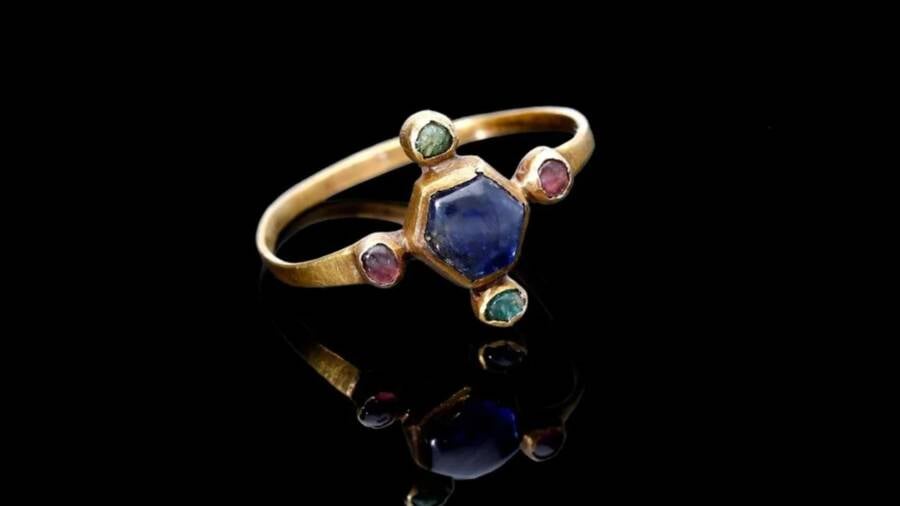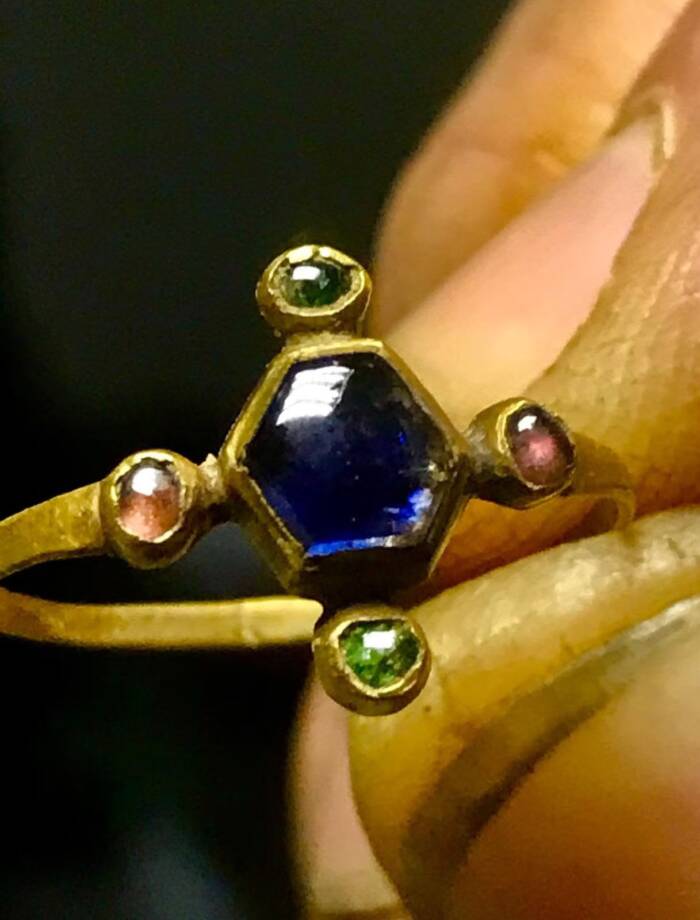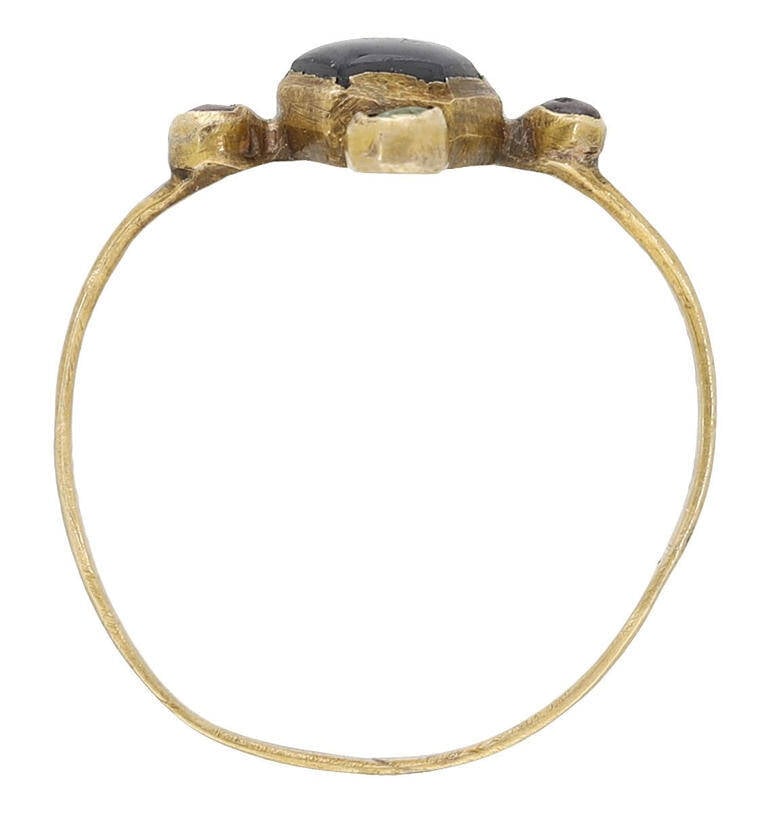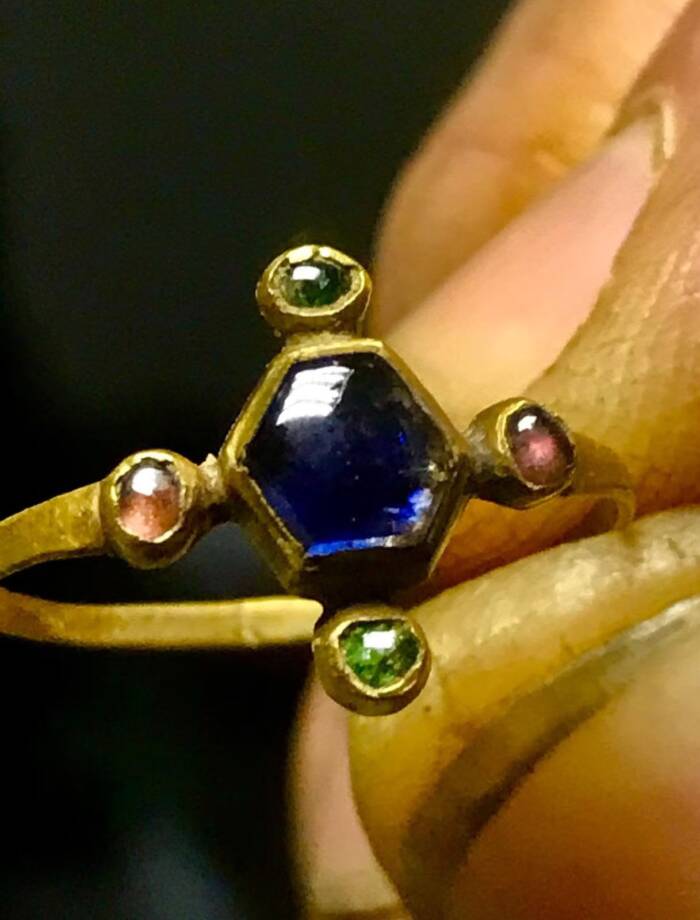“Unraveling Time: A Hidden Medieval Treasure Unearthed by a Metal Detectorist Fetches $24,000 at Auction!”
Isn’t it fascinating how the past can catch us off guard when we least expect it? Picture this: a retired firefighter named Mark Sell decides to take his metal detector for a stroll on a chilly afternoon in Norfolk, England. He’s not looking for treasure—just a little fun in the fresh air! But, as fate would have it, his casual walk turns into an extraordinary adventure when his detector beeps over what turns out to be a stunning medieval ring, adorned with all the bling a bishop would’ve loved! Estimated to date back to the late 12th or early 13th century, this gem—likely belonging to the bishop Hugh of Northwold—has since been sold for a whopping $24,000. Talk about striking gold—literally! Intrigued by how metal detecting can reveal hidden treasures and long-lost stories? This ring offers a glimpse into a rich historical tapestry that’s just waiting to be unraveled. LEARN MORE.
It’s estimated to date from the late 12th century or early 13th century, and it likely belonged to the bishop Hugh of Northwold.

Noonans MayfairThe ring was found nine inches underground by a metal detectorist.
On a cold yet sunny afternoon in 2019, Mark Sell decided to go for a walk with his metal detector. A retired firefighter, Sell was sweeping his device across the ground when it started to faintly beep. He stopped, began to dig, and found himself staring at a “line of gold” in the mud. Sell had uncovered a medieval ring adorned with a sapphire and other gems, which likely once belonged to a bishop in the Middle Ages.
And now, after it was put up for auction by Noonans Mayfair, the breathtaking ring has sold for about $24,000.
A Chance Discovery In Norfolk, England
According to a statement from Noonans Mayfair, the ring was discovered by chance in King Row, Shipdham in Norfolk, when Mark Sell decided to go for a long afternoon stroll with a friend and his XP Deus metal detector. Sell had only used the metal detector a couple of times before, and he had never found anything significant. So he was intrigued when his device began to faintly ping a couple of hours into their walk.
As the sky began to darken, Sell began to dig into the Earth. Nine inches down, he came across a gem-set golden ring caked in mud.
“I was amazed to see a thin line of gold in the clod of mud that I had dug up, and as I wiped away the mud, I could see the bezel of a medieval gold jewelled ring,” Sell recalled. “I could also see that the ring was complete with all of the original jewels still in place and was in pristine condition.”

Noonans MayfairMark Sell found the gem-set ring entirely by chance while walking with his metal detector in 2019.
The ring is set with a sapphire, surrounded by emeralds as well as garnets or rubies, and has been dated to the late 12th century or early 13th century. Though both the Norwich Castle Museum and the British Museum were interested in the ring, the auction house Noonans Mayfair took over its sale. They estimated that it would sell for between $19,000 and $23,000.
Now, it has sold for about $24,000. So who did the ring once belong to?
The History Of The King Row Ring
After examining the ring, experts at Noonans Mayfair came to believe that the artifact had once belonged to a medieval bishop.
The village of Shipdham, where Sell found the ring, has a long and rich religious history. Established by the time of the 1066 Norman Conquest, it quickly grew to be one of the largest settlements in England. All Saints Church in Shipdham dates to the 12th century, and the Bishop of Ely built his manor house in the village during the reign of King Henry III (1207 to 1272).

Noonans MayfairAnother perspective of the medieval ring, which is adorned with a sapphire, emeralds, and rubies or garnets.
Because of this history, experts believe that the ring belonged to a bishop, specifically Hugh of Northwold (sometimes formatted Hugh de Northwold).
“This form of medieval ring, with a principal cabochon stone, usually a sapphire, surrounded by smaller collet set satellite stones (garnets or rubies, and emeralds), can be securely dated to the late 12th or early 13th century, and is associated with the bishopric,” Laura Smith, a jewelry expert at Noonans, explained. “Other similar rings include one belonging to Walter de Gray, the wealthy and powerful Archbishop of York — Archbishop from 1215 until his death in 1255 — which is on display at York Minster; as well as the Bishop of Chichester’s Ring and the Whithorn Cathedral ring.”
The proceeds from the ring will be divided between Sell and the owner of the land where the ring was found. For the moment, Sell, a former firefighter, hopes to use his portion of the money to “go on a special holiday.”
It goes to show that taking a metal detector on a walk can be a productive — and sometimes lucrative — hobby. In recent years, metal detectorists in England alone have come across a hoard of Roman coins, a 2,000-year-old Celtic figurine, and even a 500-year-old pendant celebrating the marriage between King Henry VIII and his first wife, Catherine of Aragon.
Auto Amazon Links: No products found.














